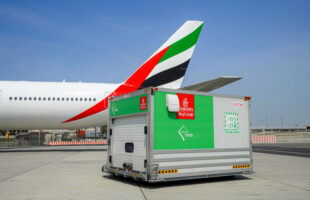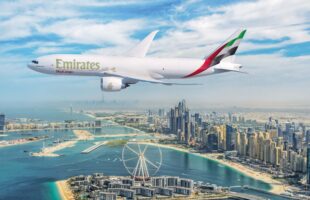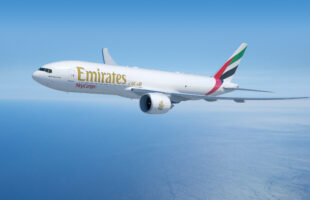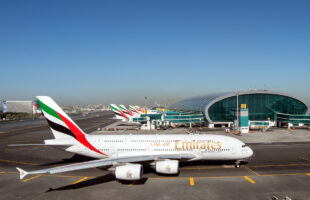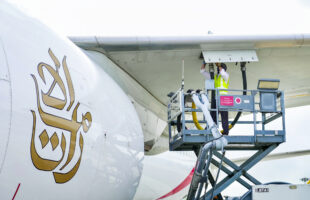In a tale of contrasting fortunes with much of the industry, Emirates Airline reported a 43 per cent jump in 2013 net profit helped by higher revenue and lower fuel costs. The Dubai-based carrier posted a profit of AED3.3 billion (US$898.4 million) for the year to March 31 up from AED2.3 billion a year earlier. Revenue grew 13 per cent at both the airline and group level, to AED82.6 billion and Dhs87.8 billion, respectively.
“It’s been a good year. There was growth in our business all round and fuel costs fell by about four per cent last year, which helped,” Sheikh Ahmed bin Saeed Al Maktoum, chairman of Emirates, told a news conference.
And on the cargo side the contrast between Emirates SkyCargo and its cargo counterparts in the industry was even more striking. While much of the air cargo sector struggles to cut loses by reducing capacity, SkyCargo has been on a continuous capacity expansion – both as a result of growth on the passenger side, but also maindeck expansion.

According to its full year results published last week, SkyCargo increased its revenue by 8.9 per cent year-on-year to AED11.3 billion. Profits for the cargo business are not broken-out. Freight Tonne Kilometres increased by 10.2 per cent but the tonnage carried was up only 7.9 per cent resulting in lower utilisation rates. However the use of larger and more fuel efficient aircraft resulted in a lower break-even point, the carrier said, adding that its freighters saw 12 per cent greater flight-time, flown with two new 777-200 LRF added to the fleet.
Emirates stated that the markets which drove growth in cargo in terms of tonnage were in the Far-East and Africa, although all areas except West Asia & the Indian Ocean grew sales in double digit percentages. But the cargo division was not completely immune to the global malaise with the proportion of SkyCargo’s contribution to overall group revenue was down slightly from 15.2 per cent in 2012-13 to 14.6 per cent in 2013-14.



